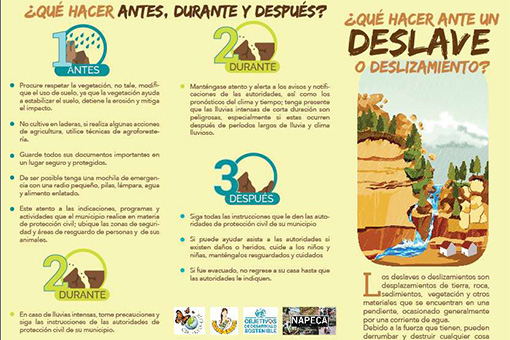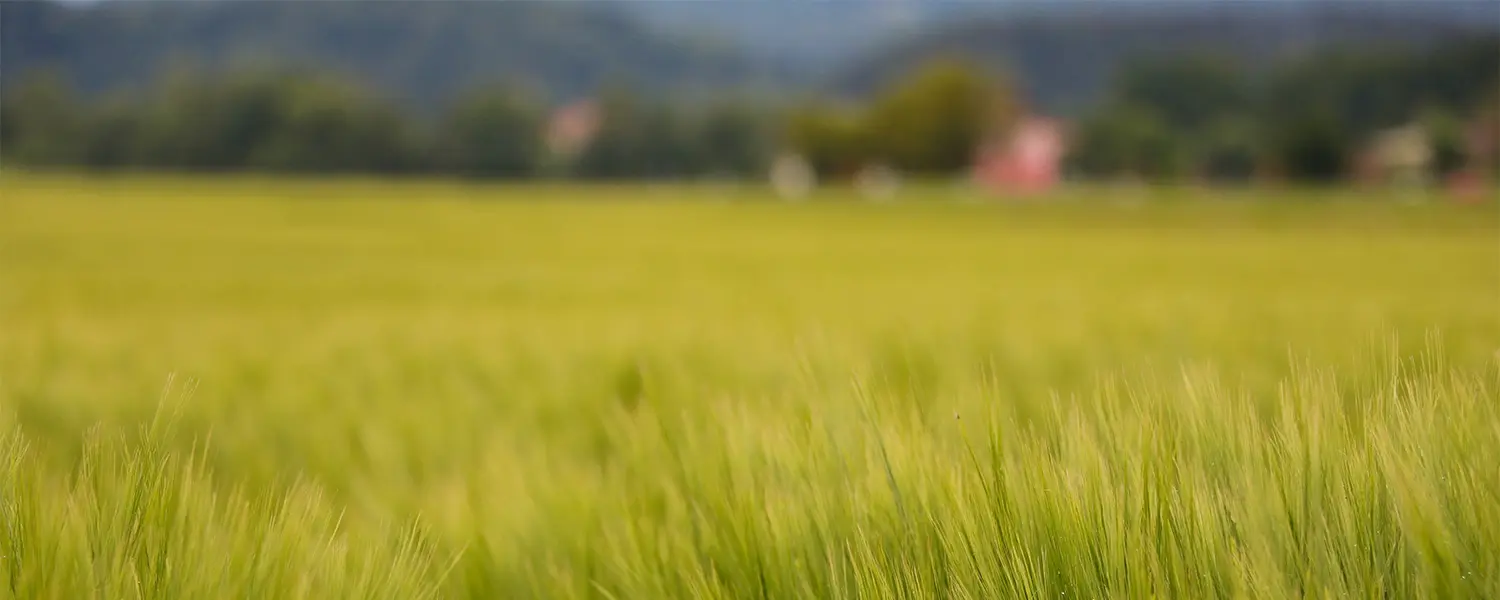Developing a local strategy to encourage school and community level adaptation and management of disaster risk and vulnerabilities
Organization: Género y flor de maíz, A.C.
Location: Sierra sur de Oaxaca, Oaxaca, Mexico
Country: Mexico
Other Organizations Involved: The municipal, communal and ejidal authorities of the seven participating municipalities, as well as the headmasters of local schools

Background
The state of Oaxaca’s Southern Sierra is a Zapotec Indigenous region with irregular topography where the majority of the population inhabits hillside communities in either rural areas or towns. These communities are characterized by their vulnerability to risks arising from their geographic location, the precarious occupation of hillsides (for both residential uses and farming) and deforestation that has provoked major negative impacts on the region’s physical environment and resources. The loss of vegetation—trees and bushes which normally contribute to soil retention and to avoiding mudslides, now common—has had dramatic consequences in recent years, including major landslides during periods of heavy rainfall and troubling shortages of adequate water for agriculture and daily activities during the dry season.
In these rural communities, such issues are further exacerbated by the lack of organization, training and knowledge regarding extreme climate event prevention, adaptation and resilience building.
In accordance with its community-based labor and organizational model, the project’s risk management and prevention efforts will focus on the educational sector. Specifically, its activities will target schools in high risk communities—with the participation not only of teachers and pupils, but also of the general population (especially parents), in close collaboration with local leaders and municipal, ejidal and communal authorities—to promote risk management actions, build emergency response capacities, and encourage adaptation to climate change. Moreover, the project will facilitate activities to mitigate environmental impacts via ecotechniques, which may be replicated in communities having similar characteristics, with the support of teaching and outreach materials specifically developed for the project.
Goals
- Train 40 leaders and municipal, ejidal and communal representatives in two municipalities.
- Hold two participatory planning meetings and conduct two community inspection visits to physically identify issues and collect data from locations with vulnerability and risk concerns.
- Produce two community risk management and prevention maps.
- Form two local risk prevention and management committees, one for each community.
- Formulate a community work program for risk prevention in each community.
- Train 50 teachers and principals/administrators of community school centers on risk management, climate change and climate adaptation-related issues.
- Develop a set of teaching tools and support activities on how to implement ecotechniques for environmental impact mitigation.
- Demonstrate the application of one hundred teaching activities and ecotechniques to promote their future implementation in local school centers.
- Develop an early warning system for disaster prevention for use in the region’s school sector.
Main activities
- A training workshop for community leaders and municipal, ejidal and communal representatives on the basics of risk management and prevention.
- Participatory planning meetings and inspection visits to prepare an assessment, including a mapping of community vulnerabilities and risks.
- Establishment of a process to facilitate local organization and training of local prevention committees (one per community).
- Training workshops for headmasters and teachers on educational techniques and the implementation of actions in schools in relation to risk management, climate change and adaptation to the latter’s effects.
- Content development, design, printing and distribution for a compendium of teaching activities and actions in schools to promote risk management and adaptation, as well as ecotechniques for environmental impact mitigation.
- Online and in-person workshops to demonstrate how to implement in schools one hundred educational and ecotechnique activities for environmental impact mitigation, as well as how to institute an early warning prevention system in the region’s school sector.
- The production of outreach and educational materials for schools and the general population.
Results
- Community leaders and citizens in each of the participating communities, as well as municipal, ejidal and communal representatives acquire general knowledge on risk management and prevention.
- The Indigenous communities in seven municipalities of Oaxaca’s Southern Sierra are equipped with mappings of community vulnerabilities and risks, as a disaster management and prevention tool.
- Participating communities are equipped with a risk prevention work program and local committees (one per community) responsible for its implementation.
- The headmasters and teachers in education centers have the resources and teaching tools needed to impart knowledge on issues related to risk management and climate change and adaptation.
- The consolidation of an early warning system within the school sector of seven municipalities in the Southern Sierra region of the state of Oaxaca.
- The community school centers of Oaxaca’s Southern Sierra region are equipped with teaching tools to support ecotechniques implementation.
- Educational and ecotechnique activities are implemented to mitigate environmental impact.
- Children, adolescents, women and men acquire information and knowledge about vulnerabilities, risk, disasters, climate change and adaptation in the communities of Oaxaca’s Southern Sierra region.
